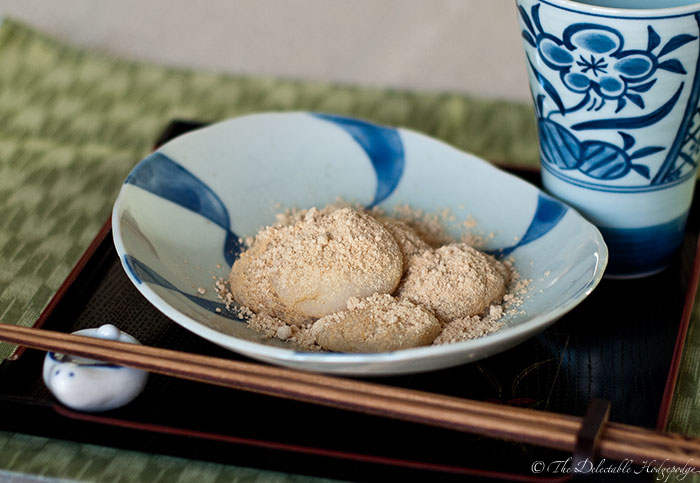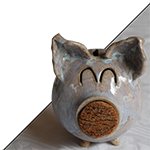
Abekawa Mochi
| Ingredient | 2-3 Servings | 2-3 Servings |
|---|---|---|
| boiled mochi | 1 batch | 1 batch |
| kinako | 7 Tbsp. | 7 Tbsp. |
| sugar | 3-4 Tbsp. | 3-4 Tbsp. |
| salt | pinch | pinch |
Another of the many mochi-based Japanese confections, abekawa mochi takes a soft, chewy base and coats it with a subtly-flavored coating of sweetened kinako flour. If you want something a little fancier (and tastier, in my opinion), kuromitsu abekawa exchanges the sugar in the kinako for a topping of dark, rich kuromitsu syrup.
Preparation
- Mix kinako, sugar, and a small pinch of salt in a bowl.
Directions
- Prepare mochi.
Prepare a batch of boiled mochi, divided into roughly bite-sized pieces. - Coat and serve.
While they’re still warm and moist, roll each mochi ball in the kinako mixture to coat thoroughly. Divide into two or three serving dishes and pour the remaining kinako mixture on top. Serve warm or at room temperature.
Notes
- While kinako is a type of soy flour, it is somewhat different from the soy flour commonly sold in the US. Standard soy flour is made up of either whole ground soybeans or defatted ground soy beans (in the case of flour intended for use as a protein source). Kinako is made from whole roasted soy beans ground very finely; it has a more complex flavor and darker color.
- If you can’t find kinako, you can roast regular soy flour to get close enough to make a good substitute. Put the soy flour in a small uncoated pan and cook over low heat, stirring constantly, until it starts to get a little darker. Be careful; it’s easy to burn.
- If you prefer the coating sweeter or less sweet, adjust the amount of sugar accordingly. You can also, of course, increase the amount of kinako, if you’re a fan of it.

